Explore the
Lower Hudson Valley
Enjoy an “Upstate” Experience Close to Home
Between the George Washington Bridge and the new Governor Mario M. Cuomo Bridge, the Hudson River flows past the cliffs of the Palisades, rock formations older than the Grand Canyon and the gateway to the Lower Hudson Valley. Grand estates, the former homes of some of the area’s most notable residents and philanthropists, welcome visitors to experience tranquil and vibrant gardens, recreational activities, architectural landmarks and grand vistas that hearken back to another era. These sites also celebrate the artists and writers inspired by the bucolic setting of the valley. This bounty of New York’s heritage is open and accessible to the public, and is located right in New York City’s backyard.
Primed to help visitors experience this bounty, Explore Lower Hudson Valley is an alliance of cultural, natural and historic sites along the Hudson River—all just 30 minutes from Manhattan and accessible by public transportation. In fact, many are located on existing commuter lines, and are near some of the area’s most photographic hamlets and celebrated restaurants. This summer, Explore Lower Hudson Valley invites you to have an “upstate” experience close to home. Discover some of the region’s most treasured gems of culture, history and natural grandeur. Plan a day trip, weekend getaway or extended vacation and include some of the valley’s stunning public gardens, historic estates, museums, cultural centers and natural areas.

The Lower Hudson Valley Partners
Learn about all 11 sites using the interactive Path through History website, to plan your own itinerary and map your journey. Link up with local restaurants and inns to complete your experience. Explore Lower Hudson Valley is a world apart right in your own backyard. Start here with an alphabetical list of participating sites.
Edward Hopper House

Edward Hopper House
Edward Hopper House Museum & Study Center gives depth to a renowned American artist whose honest representation of life in America perennially evokes both contemplation and reflection. The House celebrates and advances the legacy of artist Edward Hopper through artifacts, photography and exhibitions of artists inspired by the painter. His birthplace and residence in Nyack, NY, until 1910, after Hopper’s death the house was saved from demolition and restored by members of the local community. Since 1971, the Edward Hopper House has been preserving the legacy and home of Edward Hopper.
Add to IntineraryHudson River Museum

Hudson River Museum
The Hudson River Museum is the largest cultural institution in Westchester County. This multidisciplinary complex draws its identity from its site on the banks of the Hudson River, with collections that focus on 19th-century through contemporary American Art; Glenview, an 1876 Victorian home on the National Register of Historic Places; a state-of-the-art, 120-seat Planetarium; Hudson Riverama, a hands-on environmental teaching gallery; and a 400-seat outdoor Amphitheater overlooking the Palisades. The Museum presents a number of special exhibitions each year and a wide variety of award-winning public programs for all ages that interpret its collections, interests, and communities.
Add to IntineraryKykuit, the Rockefeller Estate
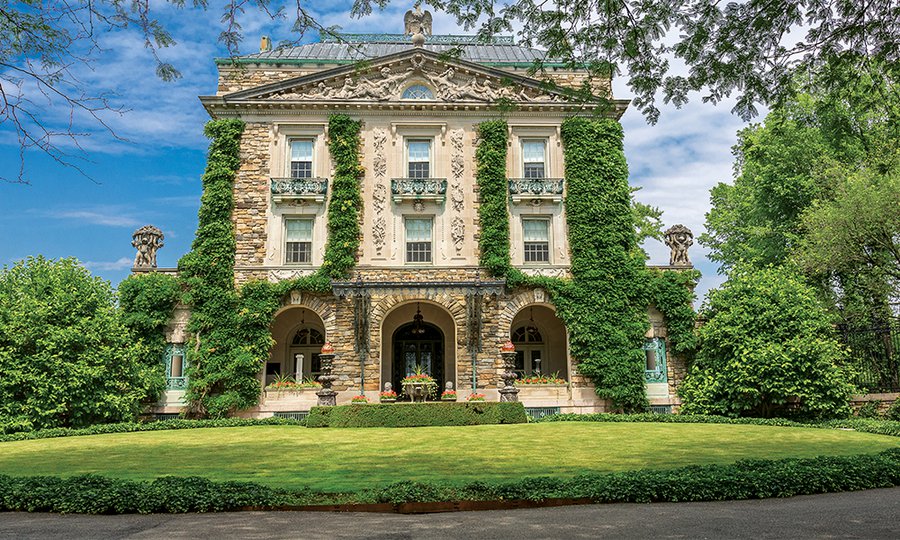
Kykuit
Kykuit is a preeminent Hudson Valley landmark. The hilltop paradise was home to four generations of the Rockefeller family, beginning with the philanthropist John D. Rockefeller, founder of Standard Oil. His business acumen made him, in his day, the richest man in America. Now a historic site of the National Trust for Historic Preservation, this extraordinary landmark has been continuously and meticulously maintained for more than 100 years. Visitors tour the main rooms of the six-story stone house, walk through the expansive, terraced gardens containing an exceptional collection of 20th-century sculpture, explore the underground art galleries with Governor Rockefeller's collection of Picasso tapestries and check out the cavernous Coach Barn, with its collections of classic automobiles and horse-drawn carriages.
Lyndhurst
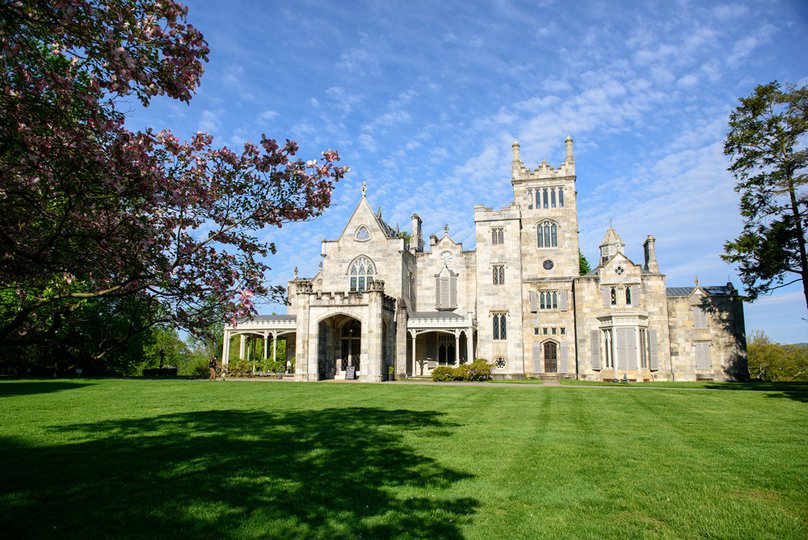
Lyndhurst
Lyndhurst, one of America’s finest Gothic Revival mansions, was designed in 1838 by Alexander Jackson Davis. Its architectural brilliance is complemented by the park-like landscape of the estate and a comprehensive collection of original decorative arts. Its noteworthy occupants included former New York City mayor William Paulding, merchant George Merritt and railroad tycoon Jay Gould. The estate was shaped during more than a century by these three families. Now, Lyndhurst invites you to explore the majestic mansion and landscape, as well as unique spaces like the recently restored bowling alley, kitchens, laundry room and observation tower overlooking widest part of the lower Hudson River to Manhattan. Lyndhurst is a site of the National Trust for Historic Preservation.
Add to IntineraryThe Old Croton Aqueduct Trail & NY State Historic Park
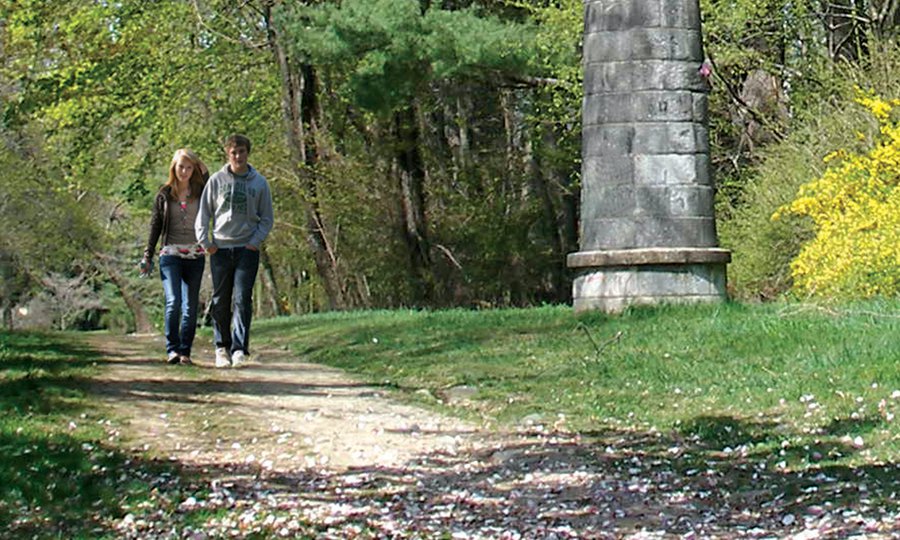
The Old Croton Aqueduct
For over 175 years, the Aqueduct Trail has linked 13 villages along the river as it meanders through scenic areas and ends at the sensational Croton Dam. The 26-mile, earth trail is atop the masonry tunnel that first brought clean water to a thirsty New York City in the 1840s. This cultural and recreational resource is open every day of the year, and appeals to a wide variety of walkers, bikers and tourists. On the trail at Dobbs Ferry is the Keeper’s House Visitor Center and Museum, a National Historic Landmark. An Italianate house, it is open Saturdays and Sundays. The trail is accessible by train, car and bus, and detailed maps are available.
Palisades Interstate Park
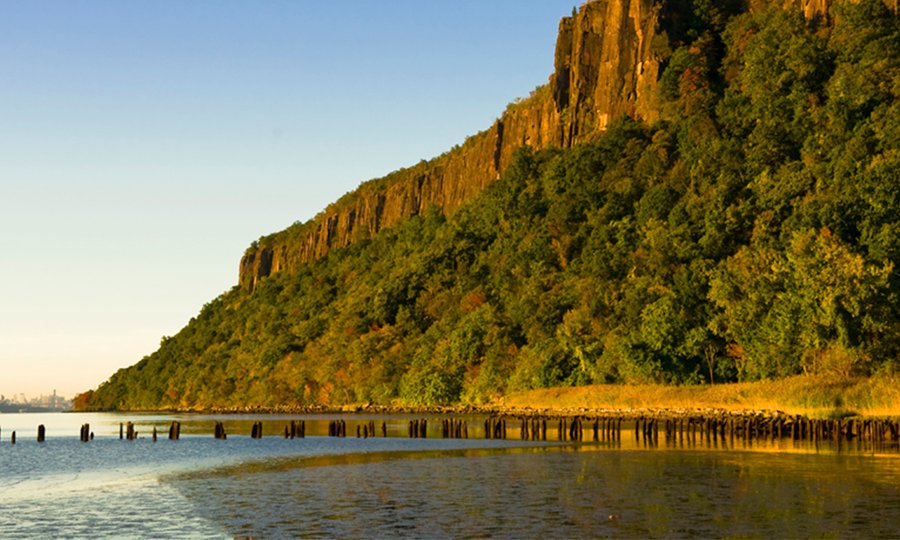
Palisades Interstate Park
The Palisades Interstate Park Commission (PIPC) receives more than seven million annual visitors at its 20 state parks and nine state historic sites. Comprised of more than 125,000 acres of open space, these parks provide opportunities for hiking, cycling, group programs, outdoor and historic education and more, all within 50 miles of New York City. In New Jersey, the Palisades Interstate Park hosts tens of thousands of cyclists annually who ride the nation’s oldest scenic road and hike the Long Path, which runs from the George Washington Bridge to Albany.
Add to IntineraryPhilipsburg Manor
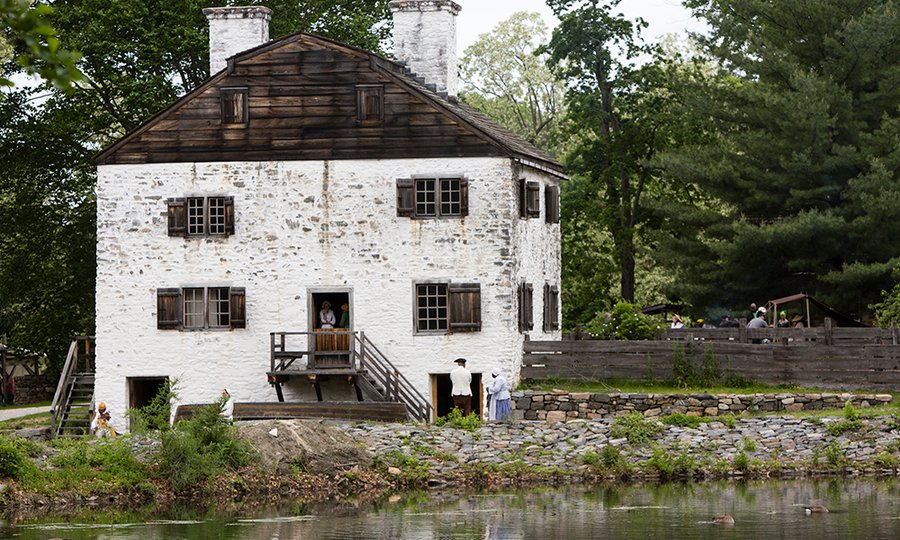
Philipsburg Manor
Wander along a woodland path and enter the year 1750, when Philipsburg Manor was a thriving milling and trading complex that was home to 23 enslaved individuals of African descent. Step into the working gristmill, where, surrounded by the sound of rushing water and the creaking of wooden gears, you learn about the skills of Caesar, the enslaved African miller. Tour the 300-year-old manor house, where the dairy, kitchens, bedchambers, warehouse rooms and parlor attest to its significance as a place of work, business, trade, leisure and repose. Visit the activity center and the new-world Dutch barn and explore the daily life and labor of the Manor’s diverse inhabitants, and hear the history of those who lived and toiled there. Philipsburg Manor is a National Historic Landmark.
Add to IntineraryPhilipse Manor Hall

Philipse Manor Hall
Philipse Manor Hall State Historic Site is an architectural and cultural gem nestled in downtown Yonkers. This Georgian-style mansion, built a century before the American Revolution, was home to the Philipse family, whose manor comprised a 52,000-acre swath of tenant farmland between the Hudson and Bronx rivers. Years later, it would become Yonkers’ first City Hall. Now a museum and cultural center, the Manor Hall is home to a unique papier-mâché Rococo ceiling, dozens of portraits from the famed Cochran Collection and engaging, relevant exhibits of history and art.
Add to IntineraryWashington Irving’s Sunnyside
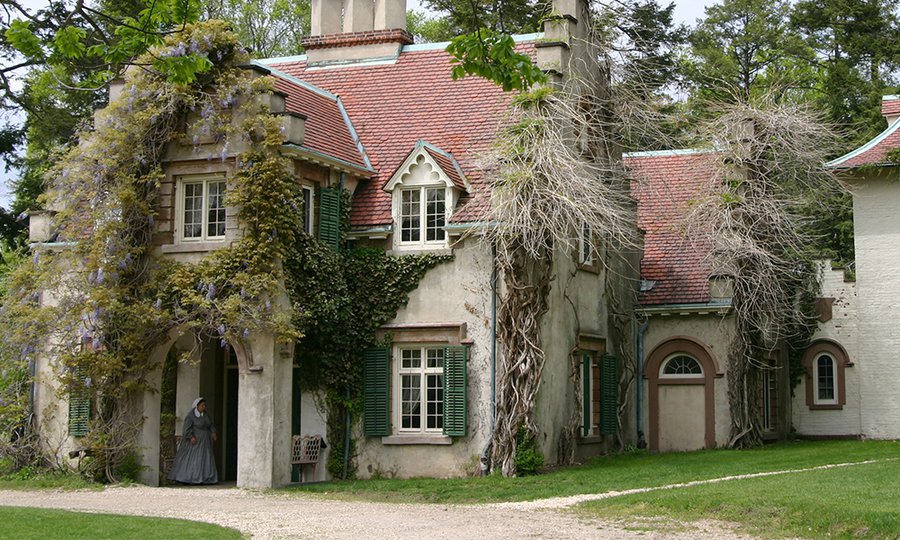
Sunnyside
A trip to Sunnyside is an enchanted adventure in a romantic landscape and a much-loved riverside home that has been charming visitors for generations. A gently curved path leads to gorgeous views of the Hudson River and reveals the allure of Sunnyside's unique design, its intimate setting, its bucolic grounds and its association with a beloved man of letters. Visitors to Sunnyside hear about Washington Irving’s storied past and how he came to be America’s first internationally famous author. Beginning in 1835, Irving himself designed the house and grounds, creating a home that was a true reflection of the man himself. Washington Irving's Sunnyside is a National Historic Landmark.
Untermyer Gardens

Untermyer Gardens
Untermyer Gardens sits perched above the Hudson River on 43 acres in Yonkers. It was built in 1917 by Samuel Untermyer, a lawyer, reformer, and human rights advocate, who desired that it be the “finest garden in the world.” The garden was famous in its heyday and in the 1920s was called the most spectacular garden in America. Thirty thousand people visited it on one day in 1939. Among the garden’s most notable features is the finest Persian garden in the Western Hemisphere, with four crisscrossing canals that symbolize the four rivers of paradise; the Vista, a breathtaking staircase leading down to an overlook with two ancient Roman columns; and the Temple of Love, a stunning and rocky temple atop dramatic cascading waterfalls.
Add to IntineraryWave Hill
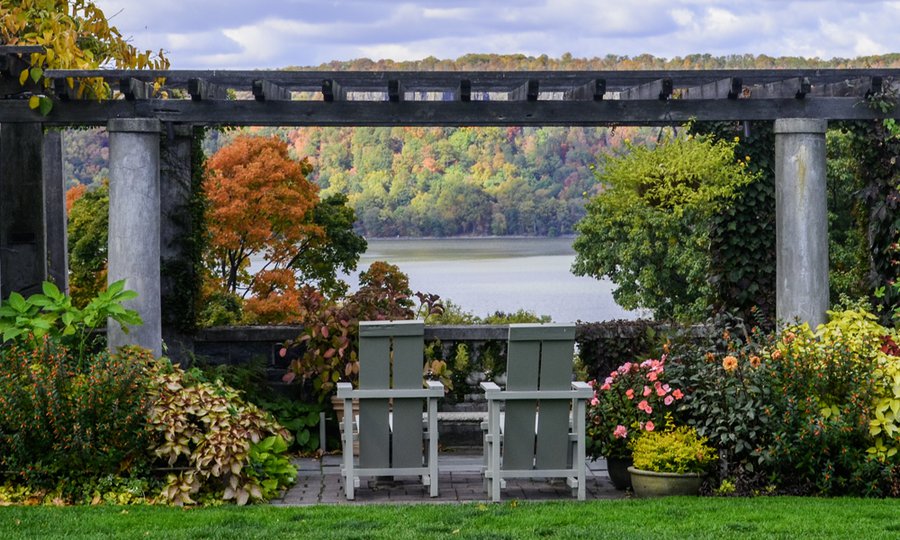
Wave Hill
Once an historic estate, Wave Hill is a place outside time, a beautiful garden oasis with stunning vistas of the Hudson River and the Palisades that inspires visitors year-round. Located at threshold of the Lower Hudson Valley, just 20 minutes by train from Grand Central Station, this hidden gem provides a curated experience like no other. Wave Hill offers engaging programs in the arts, wellness and the natural world, as well as indoor and outdoor concerts and a contemporary art gallery. Enjoy artisanal, locally sourced fare at The Café, shop for sustainable gifts by local artists or relax on the lawn under the trees. Recently voted Most Loved Cultural Spot by the readers of Time Out New York, Wave Hill offers visitors a peaceful place to connect to nature and to one another.
Add to IntineraryTips for Visiting
Public transportation
All of the venues above are located in the commuter suburbs of New York City, and are easily reached via public transportation. In fact, most are located on Metro-North’s Hudson line. Here’s what you will find at each stop:
Riverdale: Wave Hill
Yonkers: Aqueduct Trail, Old Croton Aqueduct, Philipse Manor Hall
Greystone: Hudson River Museum, Old Croton Aqueduct, Untermyer Park and Gardens
Irvington
Sunnyside
Tarrytown: Aqueduct Trail, Edward Hopper House (via Express bus over the Mario M. Cuomo Bridge), Lyndhurst, Kykuit, Old Croton Aqueduct, Palisades Interstate Park (via Express bus over the Mario M. Cuomo Bridge), Philipsburg Manor, Sunnyside
Cyclists
Many cyclists are already familiar with the popular route that crosses the George Washington Bridge and continues through the Palisades Park via route 9W. Once the construction of the new Mario M Cuomo Bridge is complete in 2018, bikers and hikers will be able to enjoy a complete loop to these sites. Additionally, the Old Croton Aqueduct already provides an excellent way to travel amongst sites on the Westchester side, including Untermyer, Sunnyside and Lyndhurst.
Create your own itinerary and map, and share it
Follow the links to the Path through History website, where you can add the venue to your itinerary, create a map of your choices and share your itinerary with friends.